Wry neck, cervical dystonia or torticollis, is a painful condition that causes your neck and sometimes your head to twist in one direction because of a severe sharp pain in the opposite side of your neck, which can sometimes run down your back to your shoulder blade.
This condition is also labelled acute wry neck, due to the nature of the onset of pain often being fast, sharp and seemingly without warning. It is not uncommon for patients to report that they woke up one morning in severe agony in their neck, wondering what could have happened overnight to cause such an injury.
This is one of the most complaints that we see in the clinic and with early physiotherapy intervention we have a great success rate and can help to decrease your pain to get back to doing the activities that you love.
WHAT IS WRY NECK?
Wry neck is a condition that is characterised by a loss of range of movement and sharp pain in one side of the neck and is often caused by one of 3 main structures:
- Spinal facet joint
- Cervical disc
- Levator scapulae muscle – cervical dystonia
When a spinal facet joint becomes stiff and locked up, it can cause severe pain. This type of pain can occur with an acute or sudden onset and is typically only felt on one side of the neck.
A cervical disc wry neck may have a more gradual onset, over days or weeks, resulting in a loss of range of motion and pain in the neck. The pain may be on one or both sides of the neck with this injury mechanism.
Wry neck caused by the levator scapulae muscle often presents in conjunction with a stiff and painful spinal facet joint. With this injury mechanism the levator scapulae muscle is experiencing muscle spasms and is evident on palpation, with firm touch reproducing the patient’s pain.
HOW TO DIAGNOSE THE CONDITION?
Wry neck is easily diagnosed by a Physiotherapist during a physical examination of the neck. The Physiotherapist will first take a thorough history from the patient, to perform a differential diagnosis between wry neck and other similar painful conditions of the neck.
The physical examination will then be performed where the Physiotherapist will examine:
- Range of motion of the neck through rotation, flexion, extension, and lateral flexion
- Levator Scapulae & Trapezius muscle length
- Combined neck movements
- The most painful neck positions
- The least painful neck positions
- Cervical spine tenderness on palpation
Once a thorough history and physical examination have been performed, your Physiotherapist will be able to diagnose you and, understanding the likely pathology that has caused the issue, create a treatment plan to help you to become pain free.
Common causes of wry neck pain are:
- Sleeping in an awkward position or with a poor neck position (often due to a pillow that is not appropriate)
- A sudden, large neck movement at a high velocity
- Carrying a large load that your body is not accustomed to, in particular on one side of the body, eg a suitcase or heavy bag
- A large increase in stress due to lifestyle factors in combination with poor sleep
TREATMENT
Wry neck treatment will be dependent on which of the three main structures is causing the pathology. Physiotherapy is very effective at treating common symptoms in a fast and safe manner for all causes of wry neck pain, which we will outline below.
If you have wry neck due to a spinal joint facet stiffness, spinal joint facet sprain or cervical dystonia muscle spasm, then physiotherapy will begin initially with gentle mobilisation of the joints in a relatively pain-free manner, with the aim being to decrease pain and muscle spasm initially. An effective method of decreasing muscle spasm and pain in patients with acute wry neck is dry needling (similar to acupuncture) of the affected muscles supporting the cervical spinal joints. We will often apply pain-relieving gels and heat during this phase of treatment, as well as deep breathing exercises, to help the patient to relax and avoid guarding the joint too much – which is often demonstrated by someone turning their entire body robotically when turning to look at something.
The next goal of treatment will be to increase the range of motion of neck movements whilst continuing to decrease pain. Through this phase of physiotherapy treatment, we will increase the force applied through spinal facet joint mobilisations and soft tissue massage of the levator scapulae muscle and upper trapezius muscle. During this phase of treatment, the patient will often feel some neck pain and discomfort as they begin to regain normal neck movements.
Once full range of motion of neck movements has been achieved, we will then move on to the final phase of rehabilitation where we aim to strengthen neck muscles that are important for activities of daily living. This will typically include weighted carries, lifting weights overhead and shoulder girdle strengthening.
In addition to strengthening, we may also focus on other parts of your life that may have contributed to the wry neck pain such as the type and height of pillow that you sleep on, the ergonomics of your workstation, and other modifiable lifestyle factors including sleep, diet, stress, alcohol, and smoking.
Wry neck of this nature will typically be completely pain free within 2 to 4 weeks, depending on the initial severity of the presentation.
If your wry neck pain is being caused by a cervical disc injury, then physiotherapy treatment will follow largely the same protocol as above with a few notable differences.
There will be an increased focus on education in the early stages, because we understand that the misinformation around spinal disc injuries can increase pain and the duration of neck pain symptoms, and decrease the long-term prognosis for a complete recovery. Cervical discs can and do heal, and whilst a wry neck from a cervical disc may take slightly longer to become completely pain free, it is still our expectation that patients will achieve a pain free neck with physiotherapy treatment.
The treatment for cervical discogenic wry neck will often start slightly more gently and progress slightly slower, however we would expect that wry neck of this nature will typically be pain free within 4 to 8 weeks; again depending on the initial severity of the patient presentation.
WHAT HAPPENS IF THE CONDITION IS NOT TREATED?
If wry neck is not treated then the pain may become exacerbated in the short term and it may take an extended period of time for it to calm down. There is also the risk of the patient guarding the neck movements excessively due to a fear of pain or damage, which can result in a long term decrease in neck range of motion due to these psychological factors.
In most people, wry neck pain will decrease over time and spontaneously resolve due to what is termed natural history, however this often takes a lot longer than if the patient were to seek physiotherapy treatment.
HOW TO SLEEP WITH A WRY NECK
One of the most common questions we get from patients with a wry neck is how they should sleep in order to avoid pain and get a decent night’s sleep. The answer to this question isn’t as simple as one specific position however. What we recommend to our patients is to sleep on their back or on the opposite side to the wry neck pain that they are experiencing, using a pillow that provides adequate support and is the correct height. We will often ask our patients to bring their pillow with them to a consultation, where we can evaluate their sleeping position and often recommend a pillow that is better suited to their body to decrease pain and the likelihood of this injury occurring again.
IS WRY NECK CURABLE?
Wry neck is a common condition that we treat all the time at Physio Fit Adelaide and with early physiotherapy treatment we can often have the pain gone within 2 to 4 weeks from onset.
If you are having pain that is recurring consistently every few months, it would be worthwhile seeking physiotherapy assessment and treatment to look into and solve the different factors within your lifestyle that could be causing this debilitating condition.
We certainly hope you find this blog helpful. If you should have any questions please don’t hesitate to reach out.
Take care.

